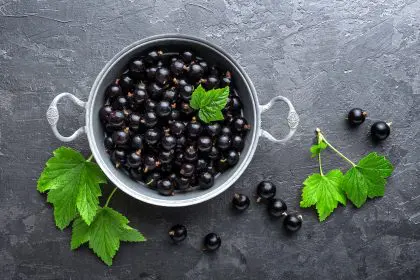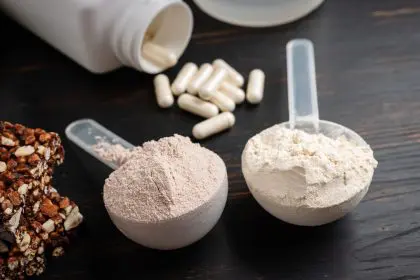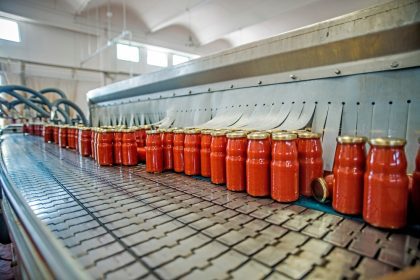The relationship between nutrition and exercise has long been understood as complementary—what you eat fuels your workout, and physical activity helps your body utilize nutrients more effectively. However, recent scientific discoveries have revealed something far more intriguing: certain foods contain compounds that activate the same biological pathways as exercise. While nothing truly replaces physical activity, these “exercise mimetics” can potentially amplify fitness benefits, support recovery, and even provide some exercise-like advantages on days when working out isn’t possible.
How food compounds simulate exercise effects
Exercise creates meaningful changes in the body through several mechanisms: increasing mitochondrial biogenesis (the creation of new energy-producing units in cells), enhancing fat oxidation, improving insulin sensitivity, boosting antioxidant defense systems, and triggering anti-inflammatory responses. Remarkably, specific compounds in certain foods activate these same pathways through molecular targets like AMPK (adenosine monophosphate-activated protein kinase), PGC-1α (peroxisome proliferator-activated receptor gamma coactivator 1-alpha), and SIRT1 (sirtuin 1)—key regulators that respond to both exercise and certain nutrients.
While no food can fully replicate the comprehensive benefits of breaking a sweat, incorporating these exercise-mimicking foods into a healthy diet may help maintain metabolic health, support endurance capacity, and complement an active lifestyle. They may prove especially valuable during recovery periods, travel disruptions to exercise routines, or for individuals with mobility limitations.
1. Matcha green tea: catechins that enhance endurance
Matcha green tea contains a concentrated array of catechins, particularly epigallocatechin gallate (EGCG), that activate many of the same cellular pathways triggered during endurance exercise. These compounds stimulate AMPK, a cellular energy sensor that responds to both exercise and caloric restriction, ultimately increasing mitochondrial biogenesis and enhancing the cell’s ability to generate energy efficiently.
Regular consumption of matcha increases fat oxidation during rest and activity—a hallmark adaptation to endurance training. The catechins in matcha also upregulate the expression of enzymes involved in energy metabolism, mimicking how the body adapts to consistent exercise by becoming more efficient at utilizing stored fat for fuel.
Research indicates that the exercise-mimicking effects of matcha extend to endurance capacity. Athletes consuming matcha green tea extract showed improved time to exhaustion in endurance tests, similar to adaptations normally achieved through training. The combination of caffeine with catechins provides a dual-action approach, with caffeine mobilizing fatty acids and catechins enhancing the cellular machinery needed to burn them for energy.
For optimal benefits, consuming matcha about 30-60 minutes before exercise may enhance fat utilization during the workout itself, while daily consumption appears to create cumulative adaptations similar to regular training. Unlike steeped green tea, matcha involves consuming the whole leaf in powdered form, providing a more concentrated dose of these beneficial compounds.
2. Wild blueberries: anthocyanins for recovery and oxygen use
Wild blueberries contain some of the highest concentrations of anthocyanins—powerful flavonoids that give these berries their deep purple-blue color and activate multiple exercise-response pathways in the body. These compounds improve blood flow by increasing nitric oxide production, enhancing oxygen and nutrient delivery to muscles similar to adaptations seen in cardiovascular training.
The anthocyanins in wild blueberries upregulate SIRT1, a protein that regulates cellular health and is typically activated during exercise. This activation improves mitochondrial function, enhancing the cell’s ability to produce energy aerobically—a key adaptation typically achieved through endurance exercise.
Recovery from exercise involves managing inflammation and oxidative stress, and wild blueberries excel at mirroring the body’s post-exercise anti-inflammatory responses. The specific profile of anthocyanins in wild blueberries modulates inflammatory pathways in ways remarkably similar to how the body responds to regular exercise training—reducing chronic inflammation while supporting acute inflammatory responses needed for adaptation.
Wild blueberries contain significantly higher anthocyanin levels than cultivated varieties, making them a superior choice for exercise-mimetic effects. Frozen wild blueberries maintain their bioactive compounds and are more widely available than fresh. Consuming about 1/2 cup daily appears to provide meaningful benefits for both sedentary individuals and active athletes looking to enhance recovery and performance.
3. Turmeric: curcumin’s exercise-like anti-inflammatory effects
Turmeric contains curcumin, a powerful bioactive compound that triggers cellular adaptations remarkably similar to those induced by regular exercise. Curcumin activates AMPK pathways, stimulating mitochondrial biogenesis and enhancing the metabolic efficiency of muscle cells—adaptations typically achieved through endurance training.
One of exercise’s most important benefits is its ability to create a balanced inflammatory environment—reducing chronic inflammation while supporting the acute inflammatory responses needed for muscle repair and growth. Curcumin mimics this balanced approach, downregulating pro-inflammatory cytokines associated with chronic inflammation while supporting the body’s natural recovery processes.
Curcumin also increases the expression of PGC-1α, a key regulator of energy metabolism that responds to exercise by increasing mitochondrial function and enhancing the body’s ability to utilize fat for fuel. This mimics how regular endurance exercise gradually shifts metabolism to more efficiently burn fat even during rest.
The exercise-mimetic effects of curcumin extend to vascular function, with research showing improvements in endothelial function (the inner lining of blood vessels) similar to those typically achieved through aerobic exercise. This can improve blood flow, nutrient delivery, and overall cardiovascular health even on days without physical activity.
Curcumin has relatively low bioavailability on its own, but combining turmeric with black pepper (containing piperine) increases absorption by up to 2,000%. Including healthy fats when consuming turmeric further enhances absorption since curcumin is fat-soluble. For those seeking substantial exercise-mimetic effects, concentrated supplements may provide higher doses than culinary use alone.
4. Pomegranates: ellagitannins that enhance strength and endurance
Pomegranates contain unique compounds called ellagitannins that convert to urolithins in the gut—molecules that trigger remarkable exercise-like adaptations within muscle tissue. The most studied, Urolithin A, stimulates mitophagy (the clearing out of damaged mitochondria) and mitochondrial biogenesis, effectively rejuvenating the energy production system of the cell similar to how exercise stimulates mitochondrial health.
These compounds enhance muscle function by improving the quality of existing mitochondria while stimulating the growth of new ones—adaptations typically achieved through consistent endurance training. Research indicates these effects can improve muscle endurance and strength, with animal studies showing significant increases in running capacity after supplementation with urolithin A.
Pomegranate compounds also trigger exercise-like increases in blood flow by enhancing nitric oxide availability, improving oxygen and nutrient delivery to working muscles. This vascular effect mimics how regular aerobic training improves circulatory function and can enhance both exercise performance and recovery.
The ellagitannins in pomegranates support the body’s antioxidant defense systems in a manner similar to exercise—not by simply providing antioxidants but by activating Nrf2, a cellular protein that upregulates the body’s endogenous antioxidant enzymes. This mirrors how exercise creates an initial oxidative challenge that ultimately strengthens the body’s own antioxidant capabilities.
Consuming pomegranate juice appears more effective than eating the seeds alone, as the processing helps release more of the beneficial compounds from the tough outer sections. Approximately 8 ounces of 100% pomegranate juice provides a meaningful dose of these exercise-mimetic compounds, with benefits appearing more pronounced when consumed regularly over time.
5. Dark chocolate: epicatechin for vascular and muscular benefits
Dark chocolate rich in cocoa flavanols, particularly (-)-epicatechin, activates many of the same pathways stimulated during aerobic exercise. These compounds increase nitric oxide production, improving blood flow and oxygen delivery to muscles in ways similar to cardiovascular training adaptations.
The epicatechin in dark chocolate increases mitochondrial biogenesis in muscle cells through the activation of PGC-1α, the same pathway triggered during endurance exercise. This leads to more efficient energy production and potentially enhanced endurance capacity, with research showing improved exercise performance in both sedentary individuals and trained athletes consuming high-flavanol chocolate regularly.
One of the most remarkable exercise-mimetic effects of epicatechin involves muscle growth pathways. Research indicates that epicatechin decreases myostatin (a protein that inhibits muscle growth) while increasing follistatin (which promotes muscle growth)—a powerful combination that mirrors some aspects of resistance training at the molecular level.
Dark chocolate also triggers exercise-like improvements in insulin sensitivity, with studies showing enhanced glucose metabolism in muscle tissue following regular consumption of high-flavanol chocolate. This mimics one of the most valuable metabolic adaptations to regular physical activity.
For meaningful benefits, chocolate should contain at least 70% cocoa, with higher percentages providing more flavanols and less sugar. Processing significantly affects flavanol content, so look for minimally processed dark chocolate or specific products that guarantee high flavanol levels. Approximately 20-30g daily (about one ounce) appears sufficient for exercise-mimetic effects without excessive calorie intake.
6. Tart cherries: anthocyanins and melatonin for recovery
Tart cherries contain a unique profile of anthocyanins and melatonin that activate recovery pathways typically triggered during the post-exercise period. These compounds reduce exercise-induced muscle damage and oxidative stress by modulating inflammatory pathways in ways remarkably similar to how the body adapts to regular training.
The specific anthocyanins in tart cherries activate AMPK and SIRT1 pathways, important energy-sensing proteins that respond to both exercise and certain nutrients. This activation improves mitochondrial function and metabolic efficiency, mimicking adaptations typically achieved through endurance training.
Tart cherries stand out for their ability to enhance exercise recovery by reducing inflammation and oxidative stress without blunting the adaptive responses needed for fitness improvements. This balanced anti-inflammatory effect mirrors how the body naturally learns to manage inflammation in response to regular training.
The melatonin in tart cherries provides additional recovery benefits by enhancing sleep quality—a crucial but often overlooked component of exercise adaptation. Better sleep enhances the body’s natural recovery processes, including muscle repair, glycogen replenishment, and hormone production.
Tart cherry juice appears to provide more concentrated benefits than whole cherries, with studies typically using 8-12 ounces of 100% tart cherry juice daily. Benefits for exercise recovery are most pronounced when consumption begins several days before intense exercise and continues throughout the recovery period. For general health and daily exercise-mimetic effects, smaller amounts consumed regularly may provide cumulative benefits.
7. Olive oil: oleocanthal and oleuropein for muscle and metabolism
Extra virgin olive oil contains oleocanthal, oleuropein, and hydroxytyrosol—compounds that activate pathways remarkably similar to those triggered during exercise. Oleocanthal mimics the balanced anti-inflammatory response typically achieved through regular physical activity, reducing chronic inflammation while supporting acute inflammatory signals needed for adaptation and growth.
Oleuropein and hydroxytyrosol activate AMPK and SIRT1 pathways, key energy regulators that respond to both exercise and certain nutrients. This activation enhances mitochondrial function and metabolic efficiency similar to adaptations seen with endurance training, potentially improving the body’s ability to utilize fat for fuel.
The compounds in olive oil support exercise-like improvements in insulin sensitivity and glucose metabolism in muscle tissue. Research indicates enhanced glucose uptake and glycogen replenishment—adaptations typically achieved through regular physical activity that help maintain metabolic health.
Olive oil polyphenols trigger exercise-like increases in antioxidant enzyme systems through activation of Nrf2, strengthening the body’s endogenous antioxidant capabilities rather than simply providing antioxidants directly. This mirrors how regular exercise creates an adaptive response to oxidative stress that ultimately strengthens cellular defense systems.
Quality matters significantly with olive oil, as processing and storage affect polyphenol content. True extra virgin olive oil from early harvest olives contains substantially higher levels of these exercise-mimetic compounds. Consuming 2-3 tablespoons daily appears to provide meaningful metabolic benefits, especially when used unheated to preserve the bioactive compounds.
8. Ginger: gingerols and shogaols for endurance and recovery
Ginger contains gingerols, shogaols, and zingerone—bioactive compounds that activate exercise-response pathways in muscle tissue. These compounds stimulate AMPK activation, enhancing mitochondrial function and energy metabolism similar to adaptations seen with endurance exercise.
One of the most remarkable exercise-mimetic effects of ginger involves its impact on muscle pain and recovery. The specific anti-inflammatory action of gingerols mirrors how the body naturally adapts to exercise stress, reducing excessive inflammation while supporting the normal inflammatory responses needed for adaptation.
Ginger compounds enhance circulation through nitric oxide pathways, improving blood flow and oxygen delivery to muscles in ways similar to cardiovascular training adaptations. This increased blood flow can enhance nutrient delivery and waste removal from muscle tissue, supporting both performance and recovery.
Research indicates ginger consumption can improve endurance capacity and oxygen utilization during exercise—adaptations typically developed through aerobic training. Studies show improvements in time to exhaustion and reduced perceived exertion during endurance activities following regular ginger consumption.
Fresh ginger contains higher levels of gingerols, while dried or heated ginger contains more shogaols (formed when gingerols are heated). Both offer exercise-mimetic benefits through slightly different mechanisms, making various forms of ginger valuable additions to the diet. Consuming 1-3g of ginger daily, either as fresh root, powder, or extract, appears to provide meaningful exercise-complementary effects.
Combining foods for synergistic effects
While each of these foods provides valuable exercise-mimetic compounds individually, their benefits may amplify when strategically combined. Many of these foods activate similar pathways through different mechanisms, potentially creating synergistic effects greater than any single food alone.
For example, combining turmeric with black pepper in a dish that includes olive oil creates optimal conditions for curcumin absorption while providing complementary compounds that activate similar pathways through different mechanisms. Similarly, adding dark chocolate to a smoothie with tart cherries and wild blueberries creates a powerful recovery blend that supports multiple aspects of exercise adaptation.
Strategic timing can enhance benefits—consuming foods with exercise-mimetic effects that support performance (like matcha or pomegranate) before activity, while focusing on recovery-enhancing options (like tart cherries or ginger) afterward. For rest days, combinations that support mitochondrial biogenesis and metabolic health can help maintain fitness adaptations even without physical activity.
Realistic expectations and integration with actual exercise
While these foods contain compounds that genuinely activate exercise-response pathways, it’s crucial to maintain realistic expectations about their effects. The cellular signaling triggered by these compounds represents just one aspect of the comprehensive physiological changes created through physical activity, which also includes mechanical stress, cardiovascular adaptations, neuromuscular coordination, and psychological benefits.
The most promising approach integrates these foods into an active lifestyle, using their exercise-mimetic properties to complement rather than replace physical activity. They may prove particularly valuable during recovery periods, when travel or circumstances disrupt training routines, or for individuals with conditions that limit certain types of exercise.
For those with mobility limitations or chronic conditions that restrict physical activity, these foods may provide particularly meaningful benefits by activating pathways that would otherwise remain understimulated. While not equivalent to exercise, they may help maintain metabolic health and muscular function when physical activity is limited.
The intersection of nutrition and exercise science continues to reveal increasingly sophisticated understanding of how specific food compounds interact with the body’s adaptive mechanisms. These eight foods represent some of the most well-researched options with genuine exercise-mimetic properties, offering nutritional approaches to enhance physical performance, recovery, and overall metabolic health.

















